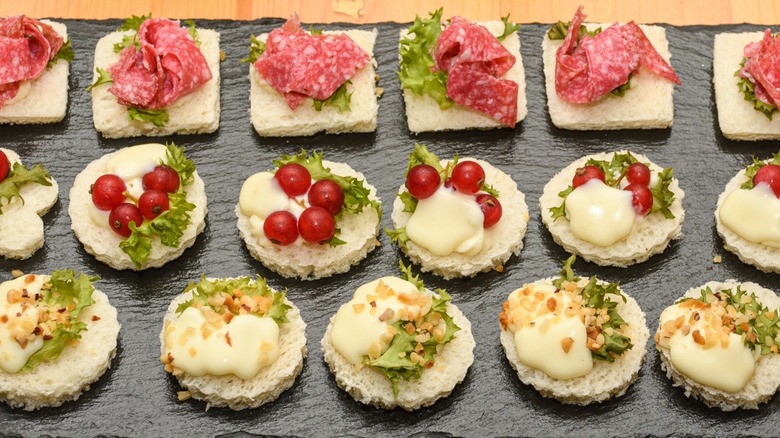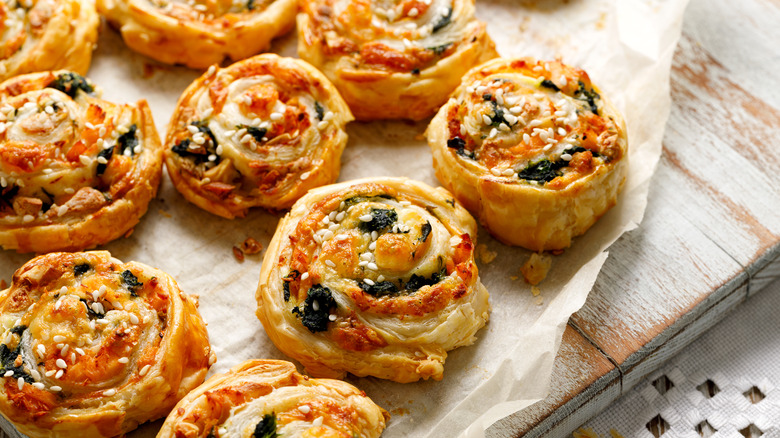How Prohibition Led To The Popularity Of Finger Foods
Finger foods are a common element of parties, from the backyard barbeque to the high-end cocktail party. They are those little "appetizers" meant to give you something to eat while you wait for the main course — think pigs in a blanket, shrimp cocktails, cheese balls, and puff pastries. Despite their simple appearance, many finger foods — or "hors d'oeuvres" — have a unique history behind them, with roots in upper-class French society, American speakeasies, and even as far back as ancient Rome.
Deviled eggs, a classic finger food, have origins in both ancient Rome and 13th-century Spain (via Alto-Harley), originally served as soft-boiled eggs cooked and served in flavorful sauces and spices. During the 1800s, the French invented and popularized the canape – named after a type of sofa at the time — which is simply toasted bread topped with a savory topping like fish or meat (via The Canape Kitchen). The origins of finger foods have always seemed to exist as simple yet delicious snacks to feed hungry guests during events, encouraging them to stay and enjoy the party. After all, good food and good drinks are key to making a good party.
If good drinks help to make a party, then it would seem that the era of Prohibition would be an ironic time to hold one. How could a time when liquor was banned in the United States contribute to the popularity of a type of food that includes onion rings and tea sandwiches?
Speakeasies served finger foods to guests
When you think of Prohibition, you usually think of flapper girls, jazz, and secret underground bars manned by machine gun-toting gangsters — not what folks were eating in between shots of bootleg gin and whiskey. According to PBS, however, finger foods were actually a rather popular form of food served at these illicit parties, usually for the purpose of keeping patrons happy and somewhat sober.
Serving finger foods such as sandwiches served a twofold purpose. As the food helped to prevent patrons from getting too drunk, this allowed speakeasy operators to serve more of their ill-gotten drinks and kept partygoers from leaving in an inebriated state. After all, if throngs of people were coming from one place completely wasted, people would start asking questions about what exactly was going on.
It wasn't just speakeasies that helped to introduce the idea of finger foods to the general public. History tells us that those who wanted a drink but preferred to be a bit more private would host cocktail parties (all in secret, of course) for close associates. These cocktail parties usually included a variety of small appetizers and snacks for guests, mostly seafood-based fare such as oyster toast, jellied anchovy molds, crabmeat cocktails, and shrimp patties. The 1920s did have a rather luxurious menu to match the rest of its decadence.
When Prohibition ended in the 1930s, the idea of these finger foods still remained a popular concept at now-legal cocktail parties and bars across the nation.

